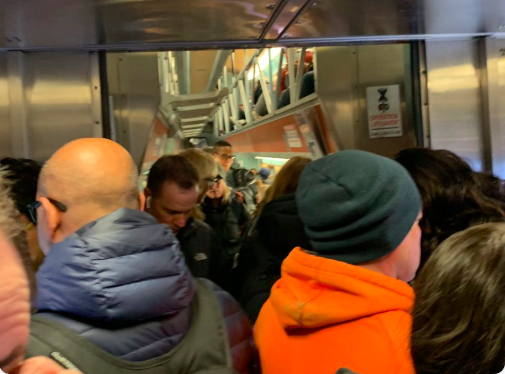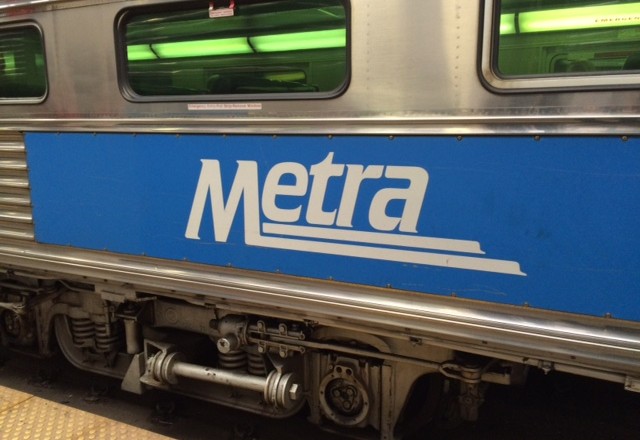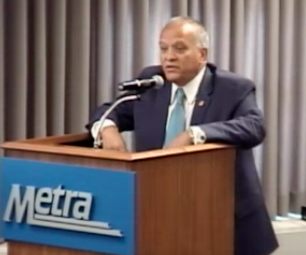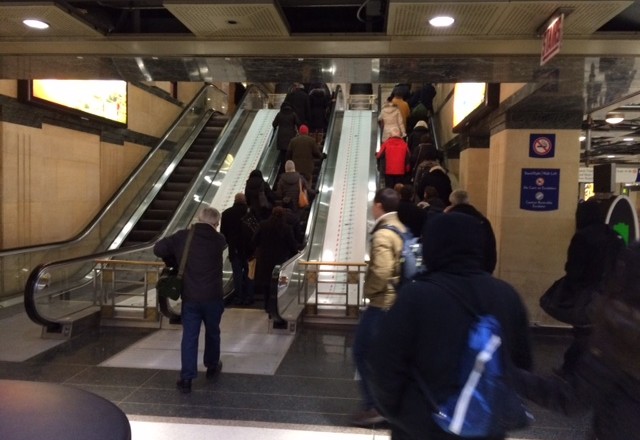U.S. Rep. Dan Lipinski has some pointed questions for Amtrak’s CEO about that daylong service meltdown at Union Station Feb. 28 that disrupted plans for 100,000 passengers.
Interestingly, Lipinski wants to know if Amtrak contemplates reimbursing those who had to pay for alternate means of commuting home. Uber and Lyft were reportedly charging stranded Metra commuters as much as $125 as a result of “surge pricing.” What Metra trains did leave the station were “load-and-go” jammed. (Tweeted photo above).
The Chicago area congressman, like his father before him, has always played a key role in transportation issues. But Lipinski has a lot more clout now as the new chairman of the House Railroads Subcommittee. He’s putting Amtrak CEO Richard Anderson on notice, giving him until the end of March to respond to nine detailed questions about the snafu.
After the incident, Anderson apologized for the Union Station mess and said the “root cause” of the signal failure was “human error in the process of deploying a server upgrade in our technology facility that supports our dispatch control system.”
That prompted two questions from Lipinski and just about everyone: Why did Amtrak decide to launch a computer upgrade on the dispatch control system during the morning rush hour, when a glitch could — and did — cause chaos? Any IT person will say upgrades are typically done overnight or on weekends to minimize the harm from a system crash.
Anderson did not elaborate on the “human error.” However U.S. Sen Dick Durbin said the problem was caused when “a worker fell on a circuit board, which turned off the computers and led to the interruption of service that went on all day long.” Durbin said he learned this in speaking with Anderson.
So Lipinski also wants to know how this employee ended up “falling (into) or colliding with” the circuit system, an event that to many people seems ludicrous, if not just plain comical.
In his meeting with the Amtrak executive last week, Lipinski said Anderson provided “initial details,” but evidently not enough to satisfy the congressman.
“I appreciated the candor CEO Anderson displayed when he met with me and accepted responsibility for the failures that led to the chaos at Union Station,” Lipinski said in a statement.
“However, we need more than contrition and an acknowledgment of what went wrong in order to make sure this doesn’t happen again and to compensate passengers. I’ve asked him to conduct an in-depth review of Amtrak’s policies and procedures and present a corrective action plan to help build back the public’s confidence in our rail system and give commuters the reliable service they should expect.”
The signal problem at Union Station began around 8:30 a.m. Feb. 28 and affected six of Metra’s lines, the BNSF, Metra’s busiest; Milwaukee West and Milwaukee North; the Heritage Corridor; North Central and SouthWest Service.
The system failure prevented Amtrak dispatchers from automatically controlling train movements. Amtrak had to manually operate the signal and switching points and allow only one train at a time to move, according to Metra.
It’s important to note that this system crash occurred almost two years ago to the day when Amtrak blamed a computer power failure at Union Station for bringing a halt to dozens of passenger and Metra commuter trains and disrupting plans for tens of thousands of passengers.
The computer servers which control the Union Station dispatching system lost power just as rush hour was beginning on Feb. 24, 2017. An Amtrak spokesman said all traffic was stopped because the system controls the signals and switches for tracks on both the north and south sides of the station. Full service was restored about 2 1/2 hours later.
The 2017 shutdown affected a total of 87 Metra trains and six Amtrak trains.
Other key questions Lipinski posed to Anderson include:
— What management protocols exist or are being implemented to ensure the timing of future computer system changes or upgrades are not implemented during high-traffic times and will not result in system degradation that negatively affects commuters on Amtrak or other rail systems?
— What back-up or redundancy system does Amtrak have to ensure the operation of its dispatch control systems? If Amtrak does have such a system, what failure occurred to that system on Feb. 28?
Approximately 120,000 Amtrak and Metra passengers use Union Station each day. More than half use the BNSF Line between downtown Chicago and Aurora.
So, a lot of people will be anxiously awaiting those answers.
— Richard Wronski
A version of this story also appeared on Trains Magazine’s News Wire.



